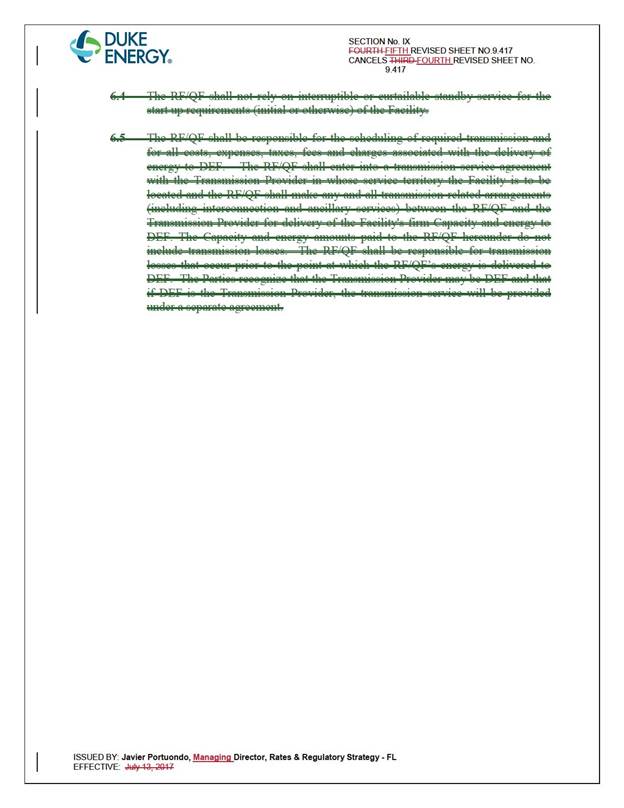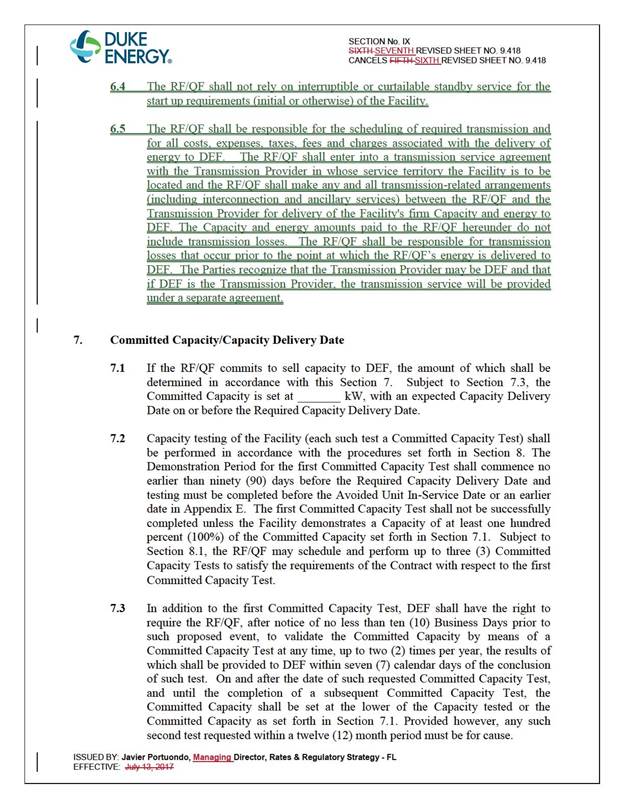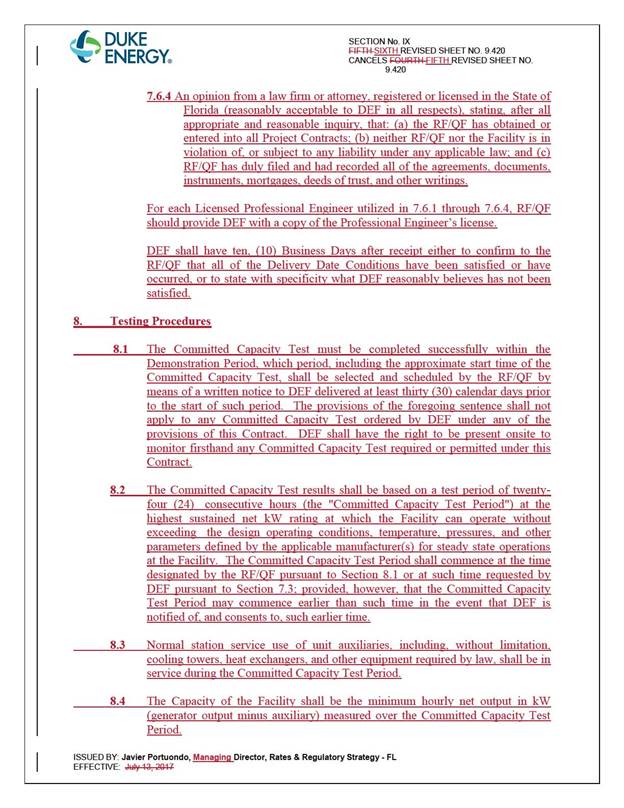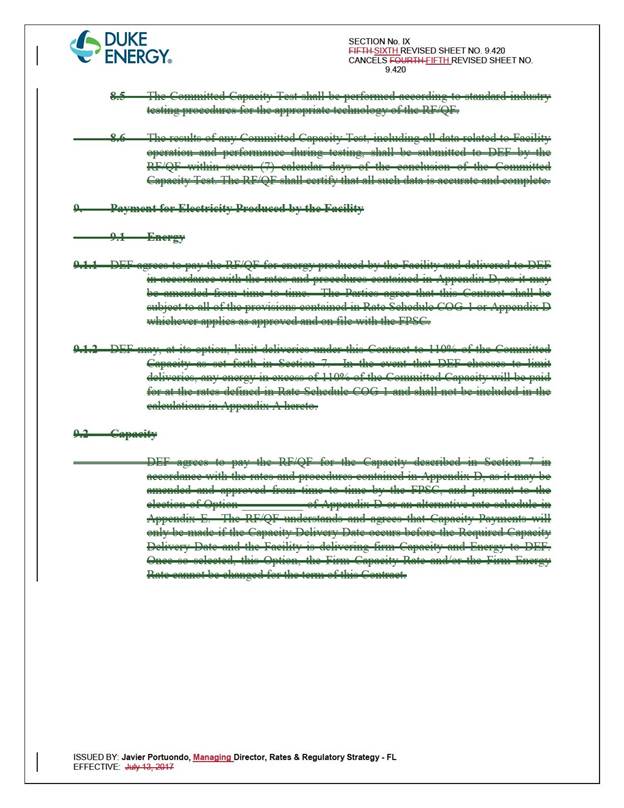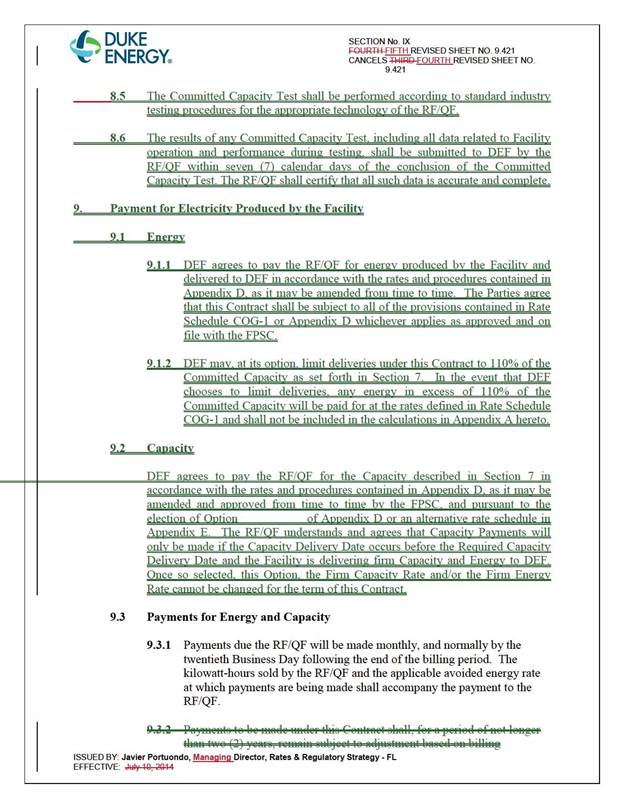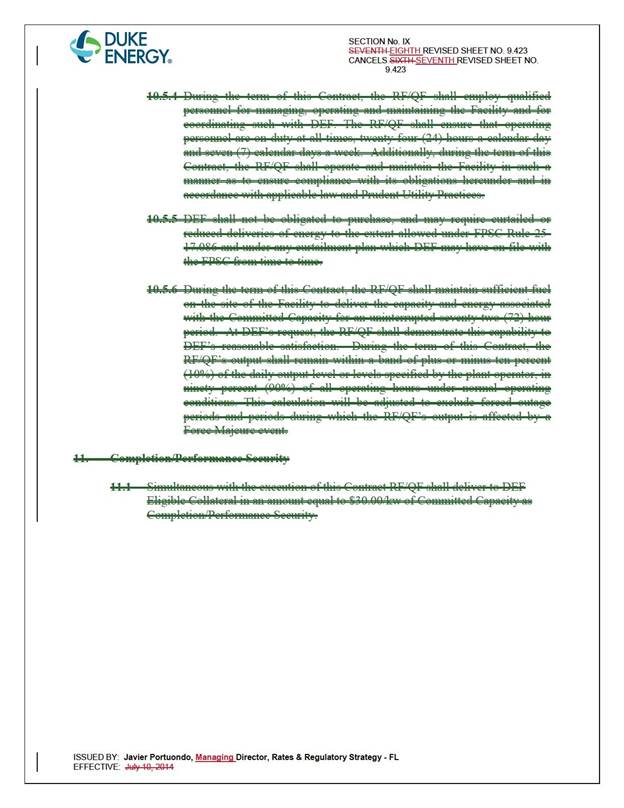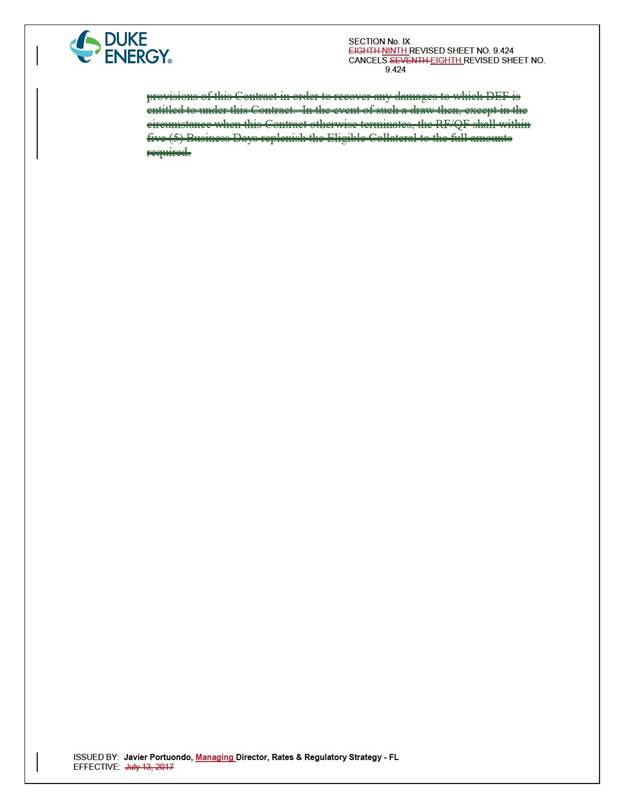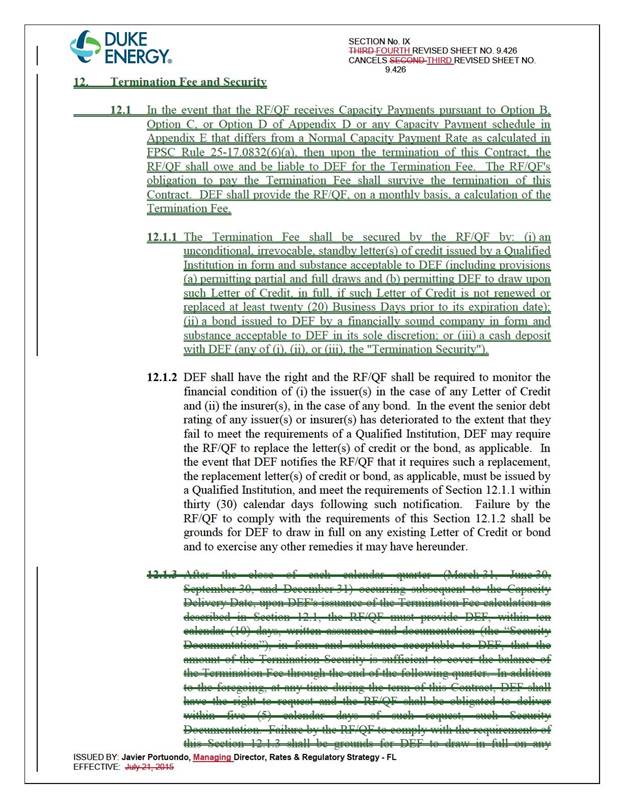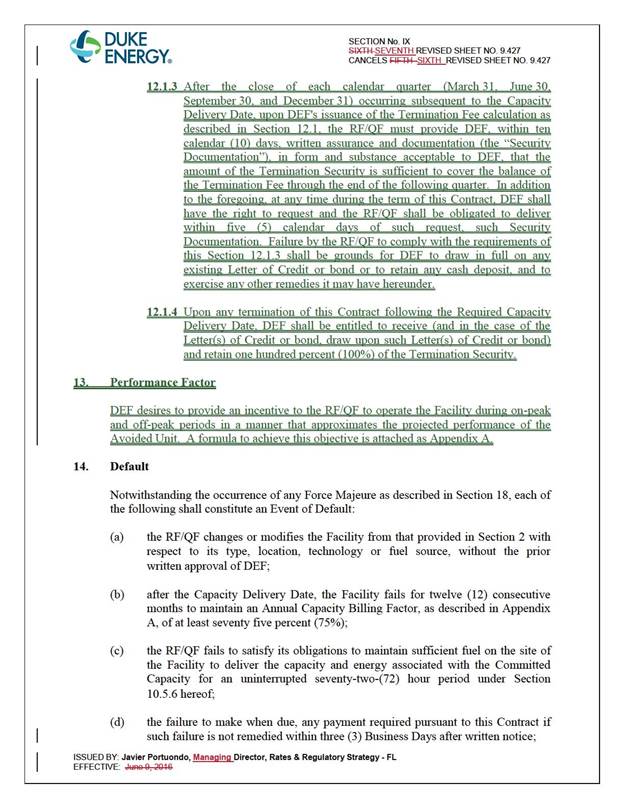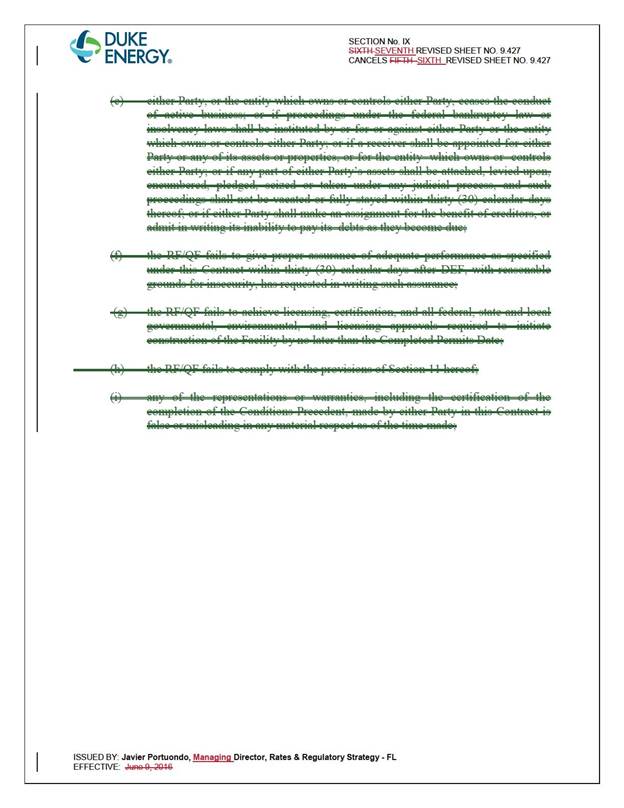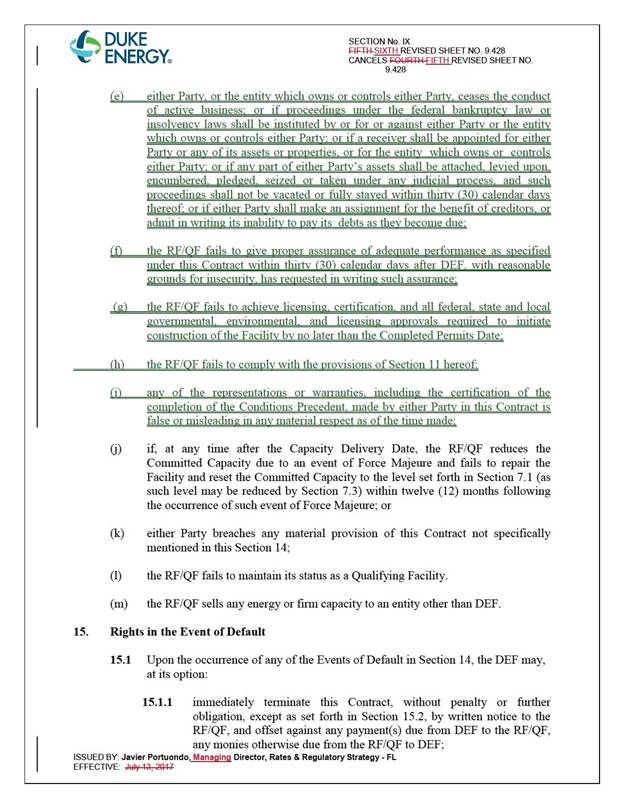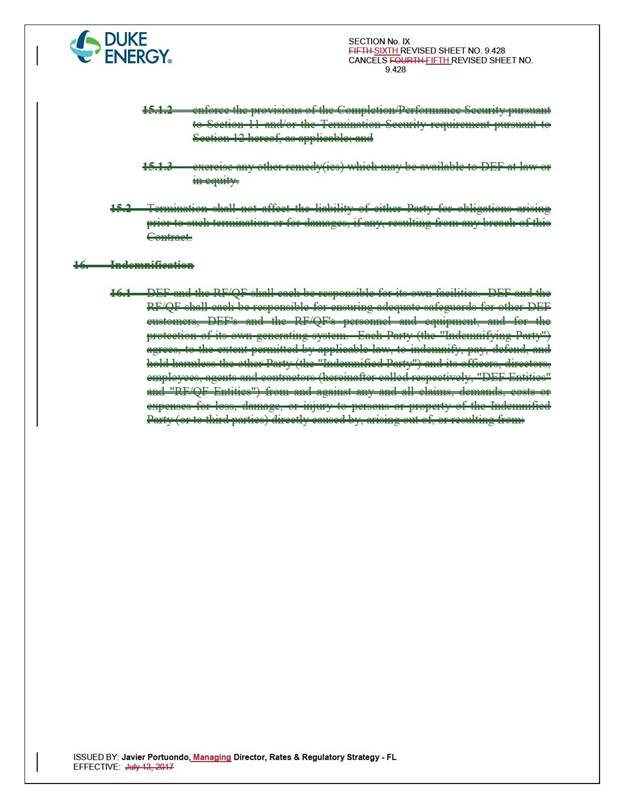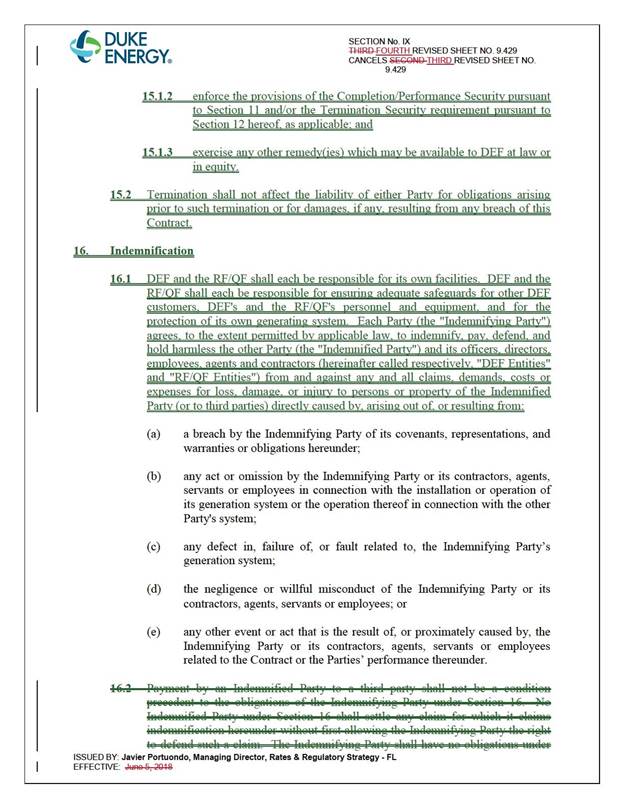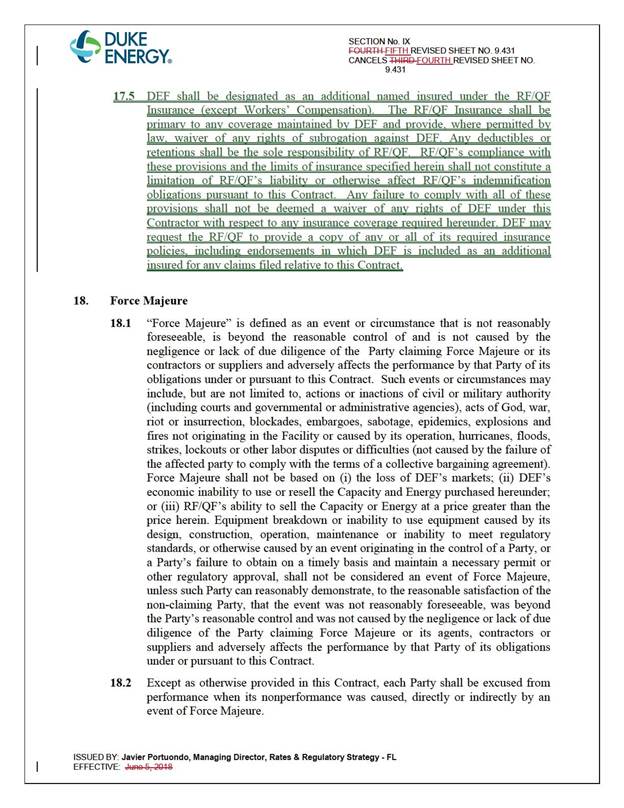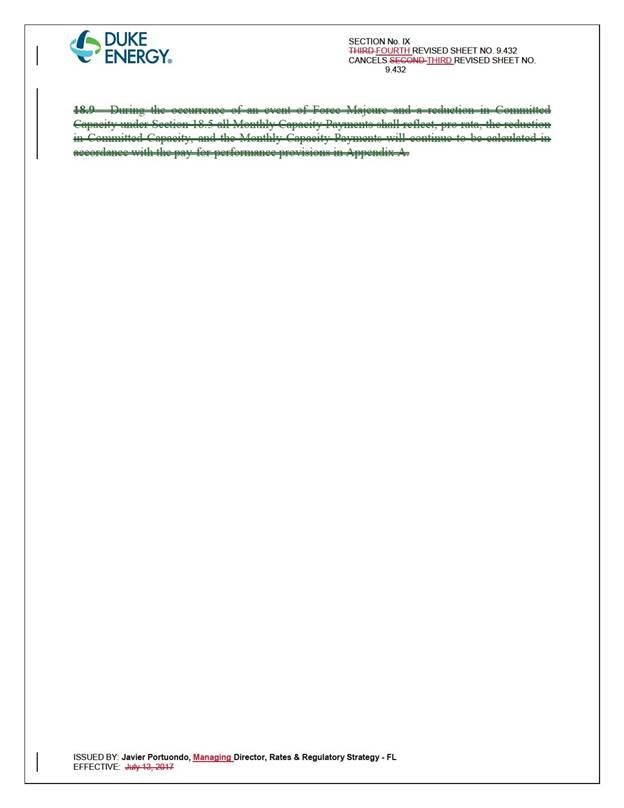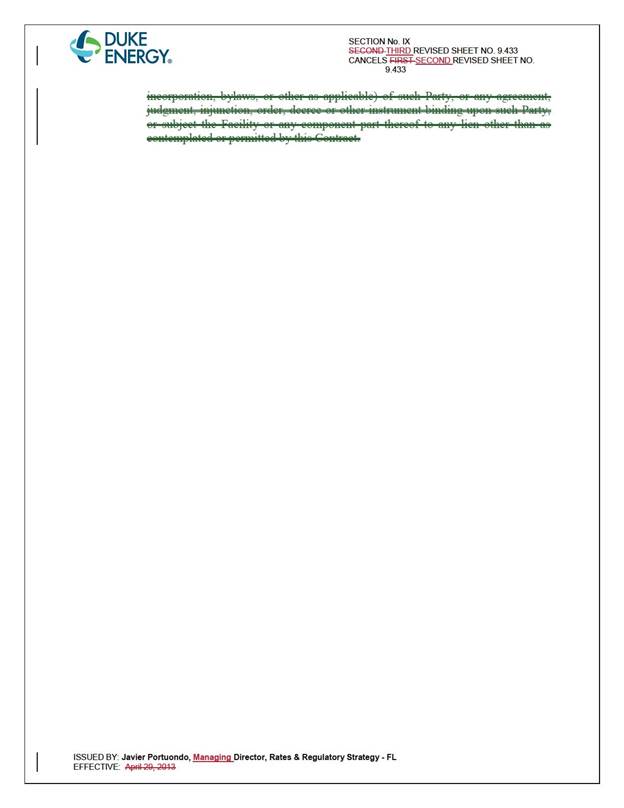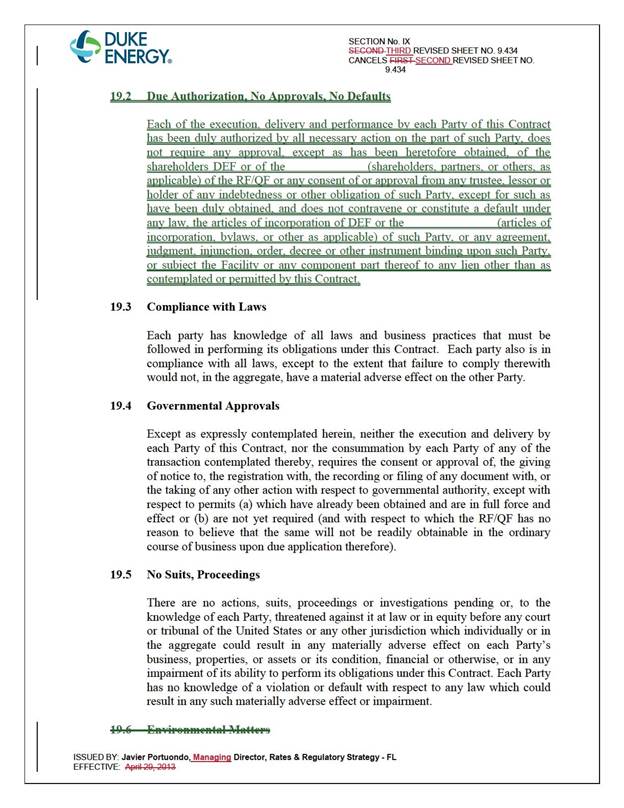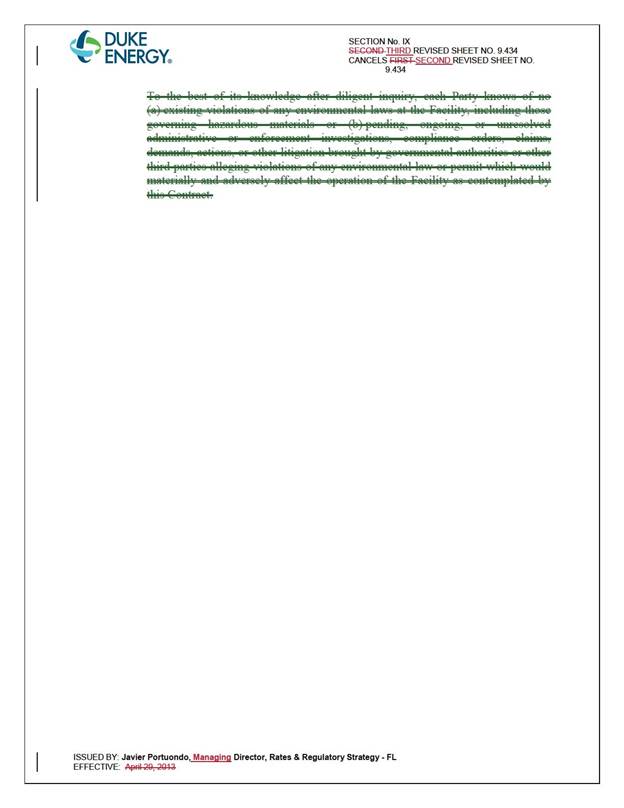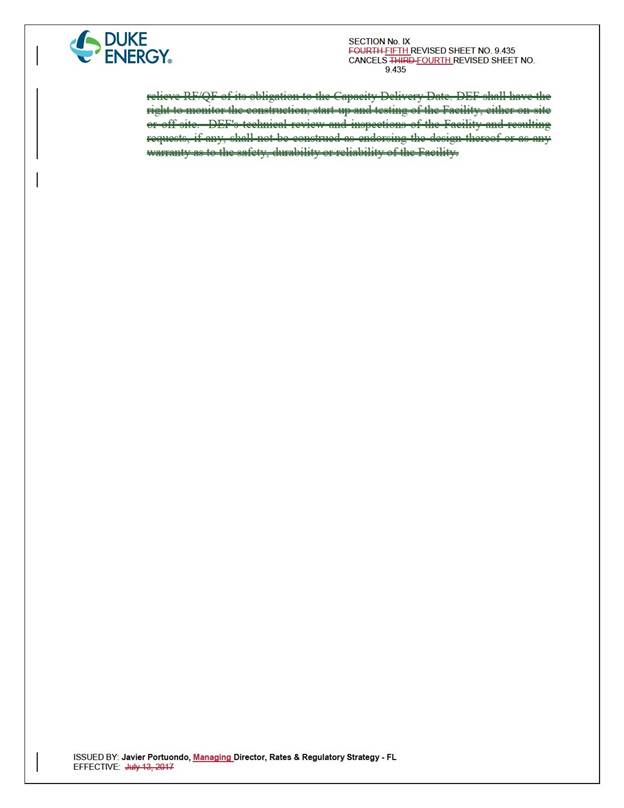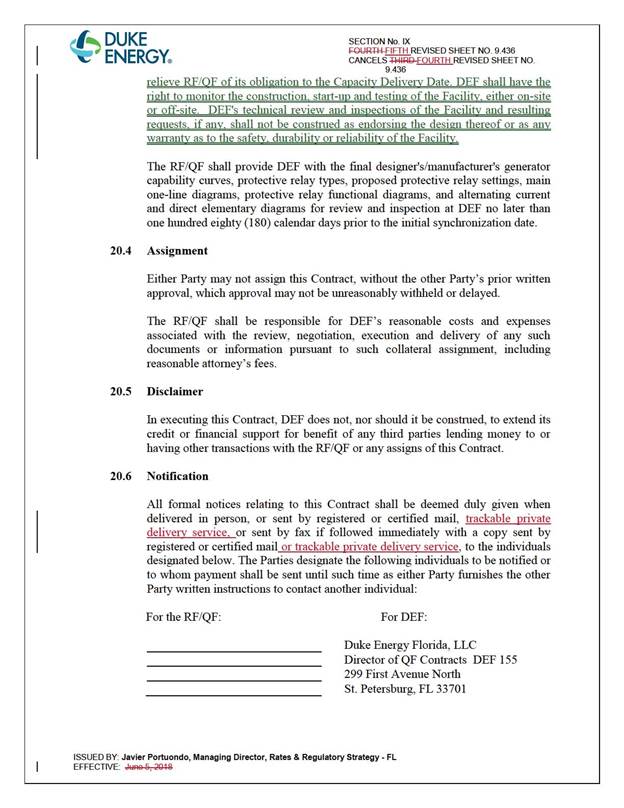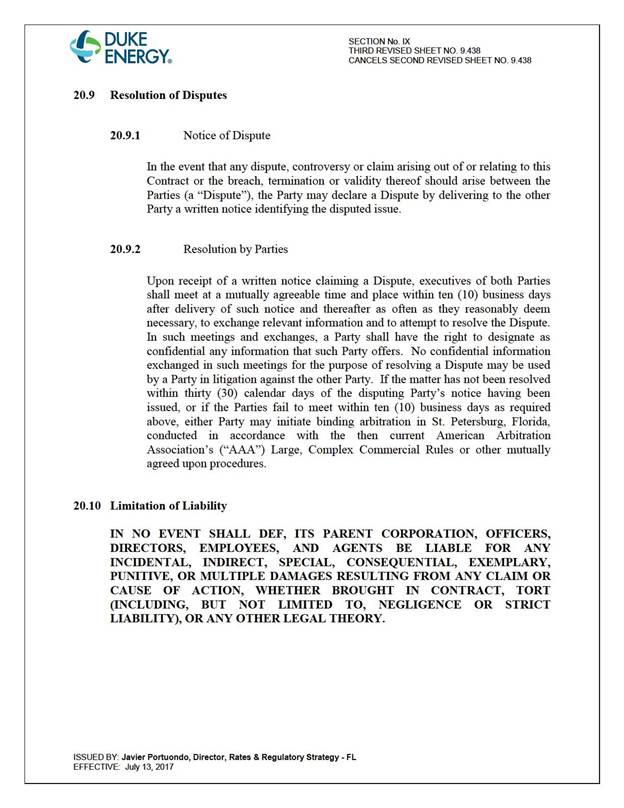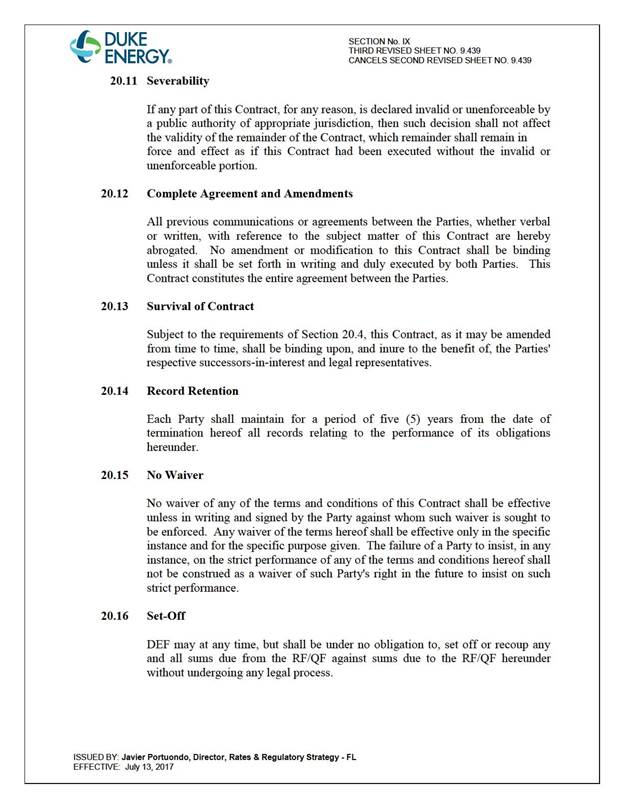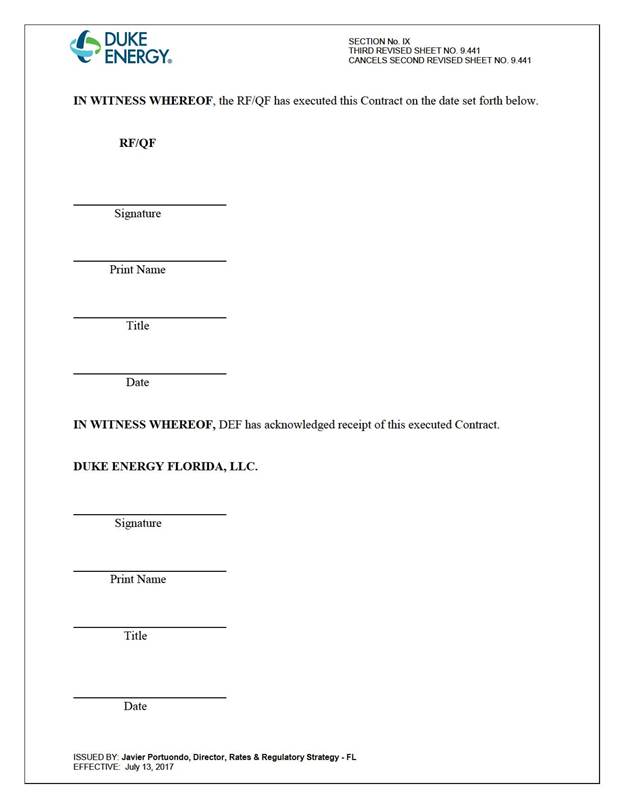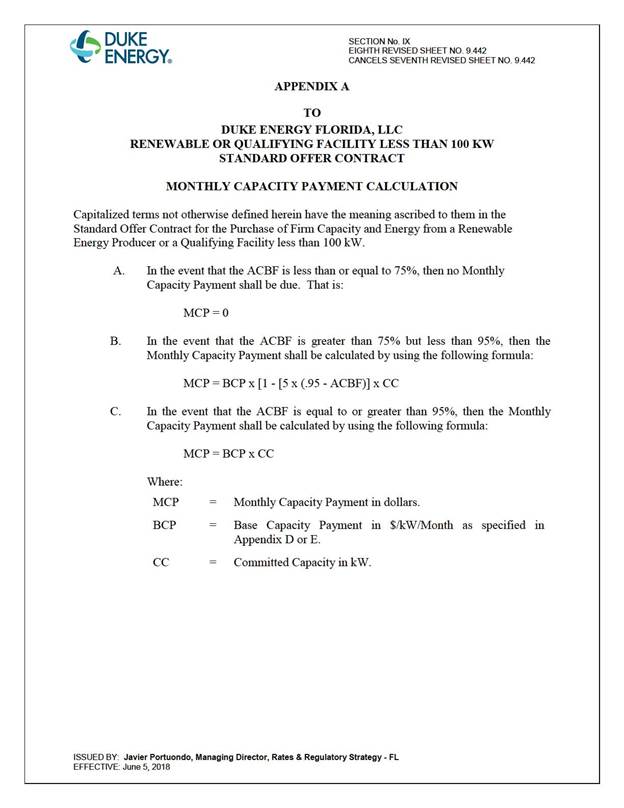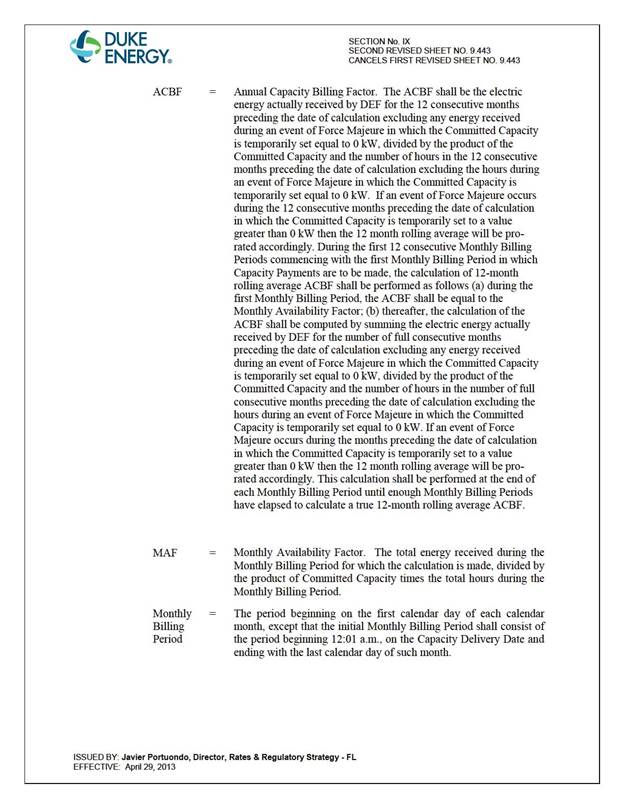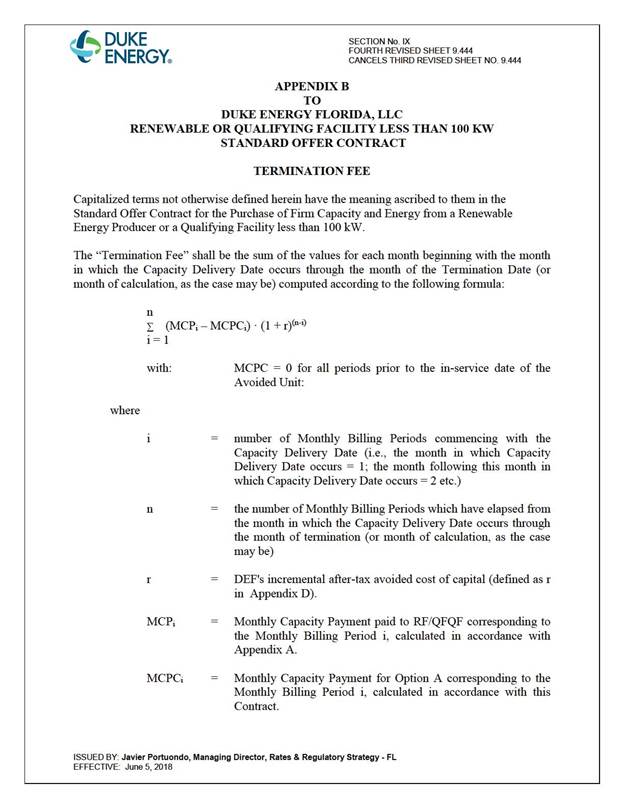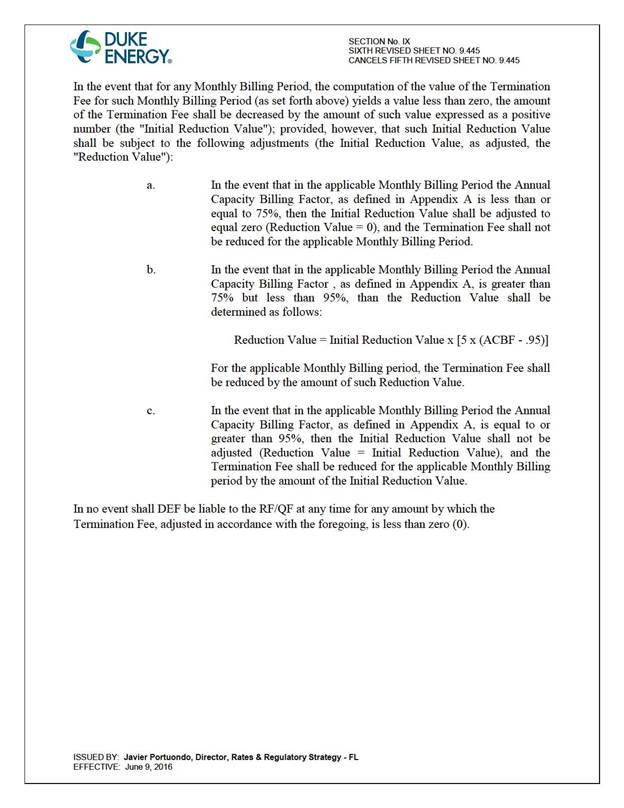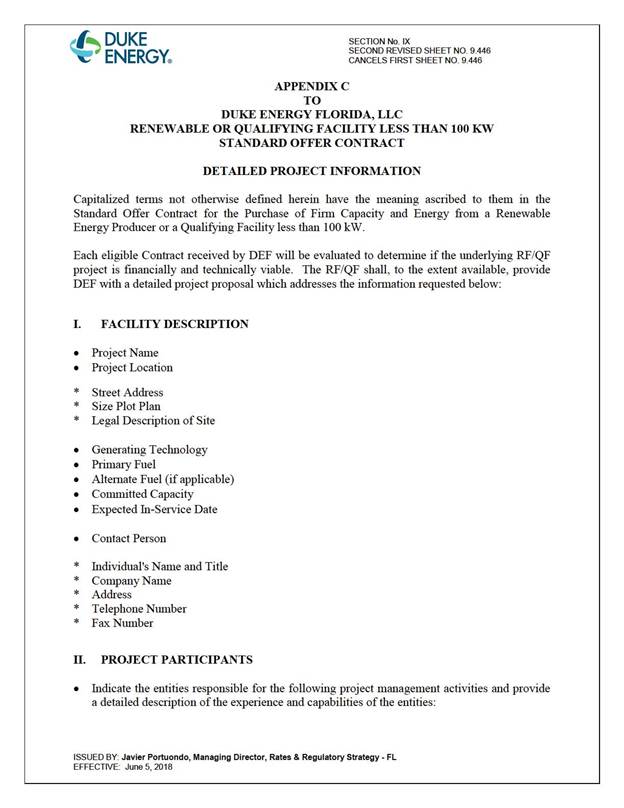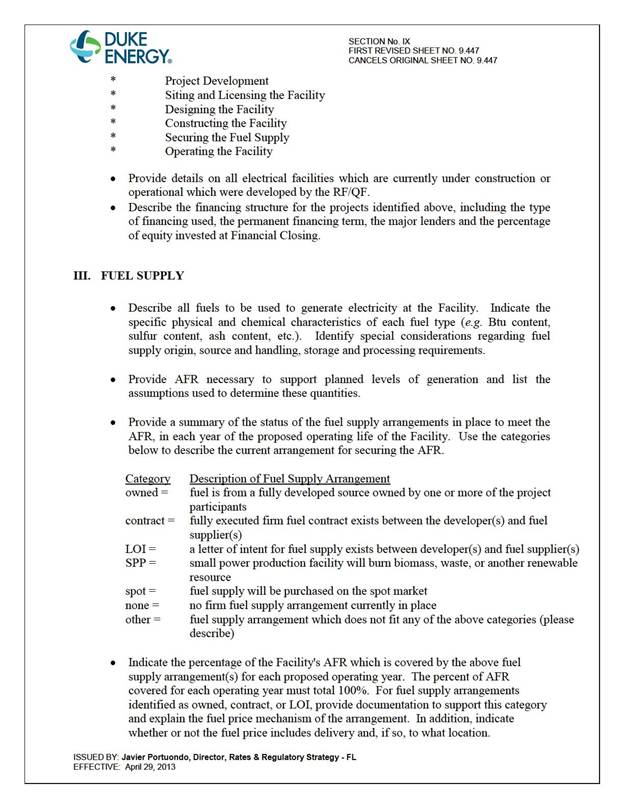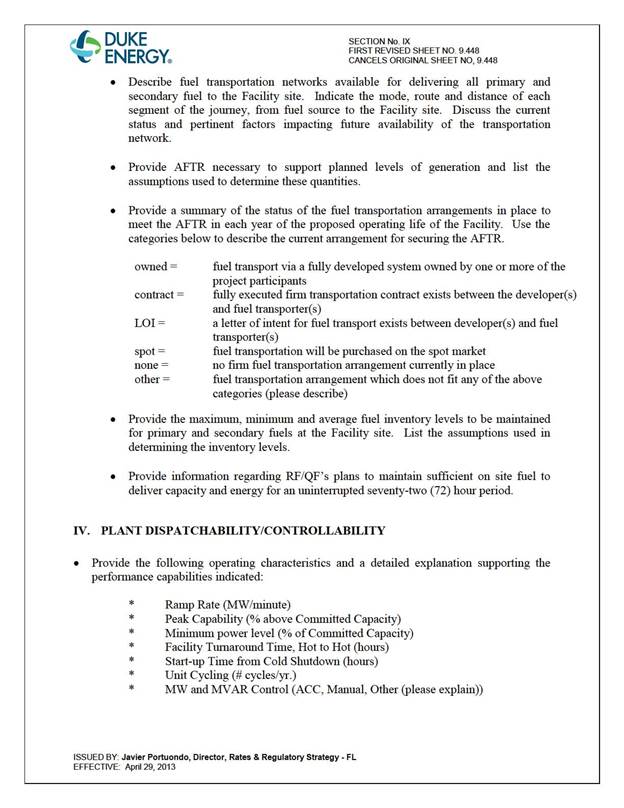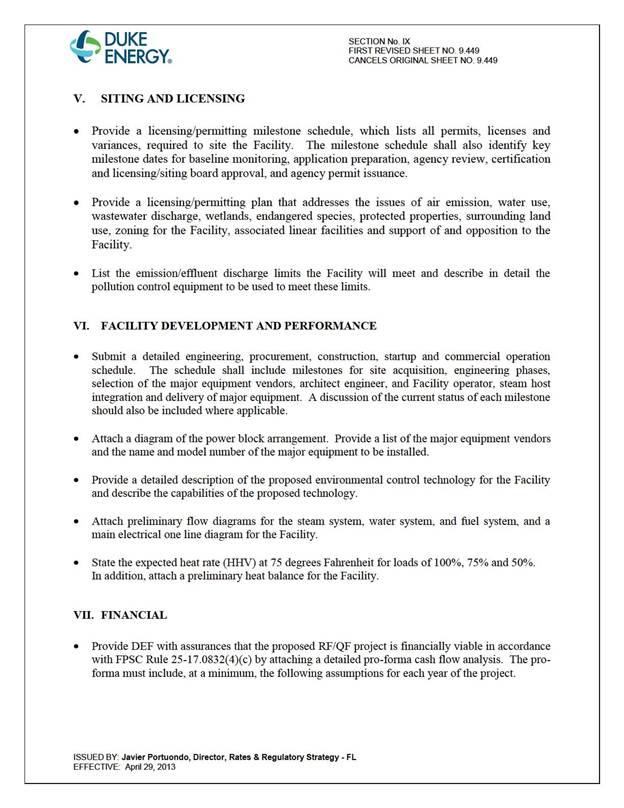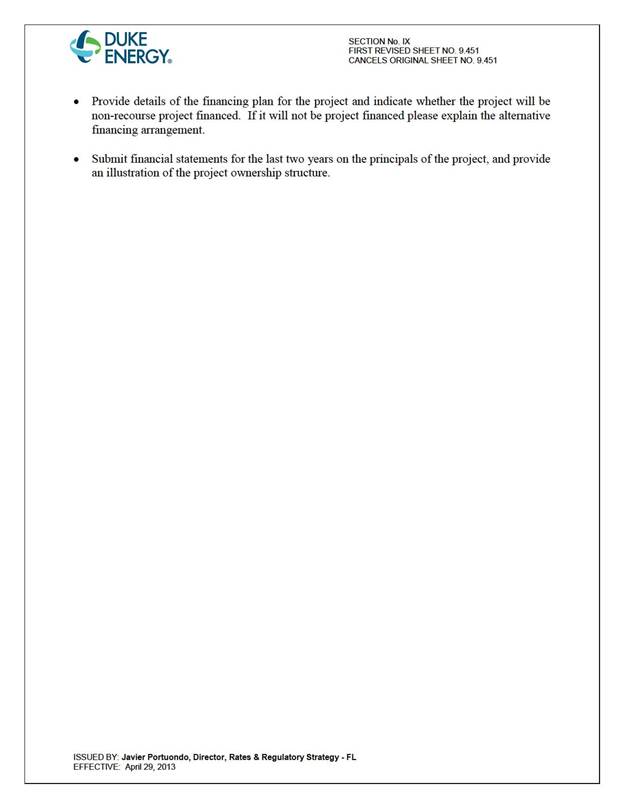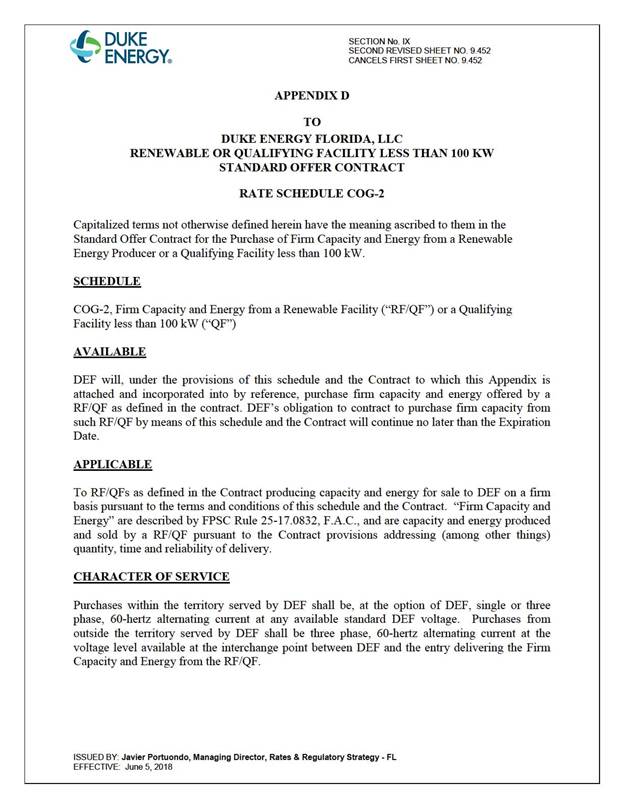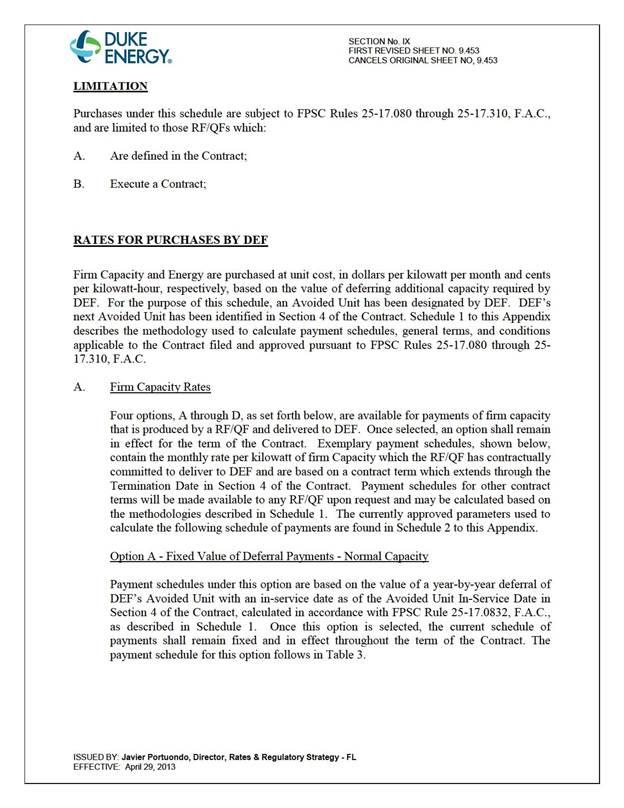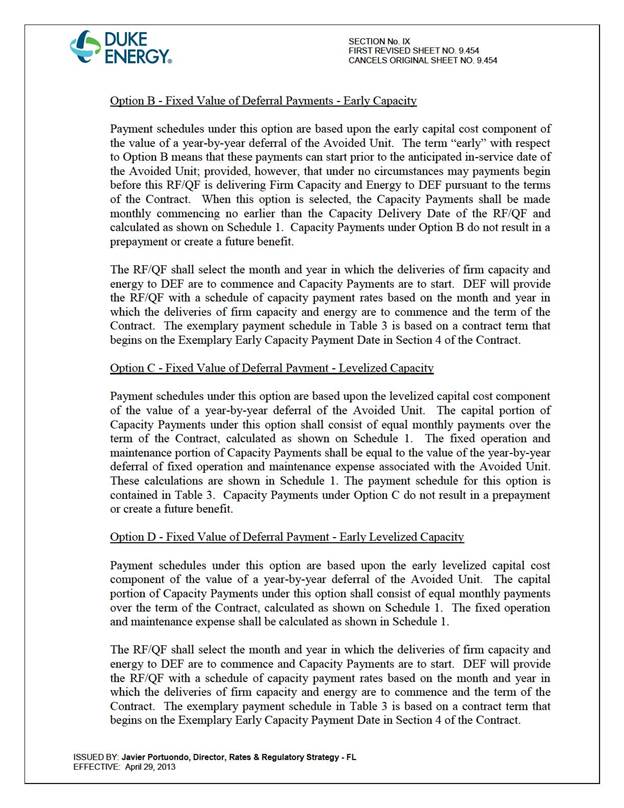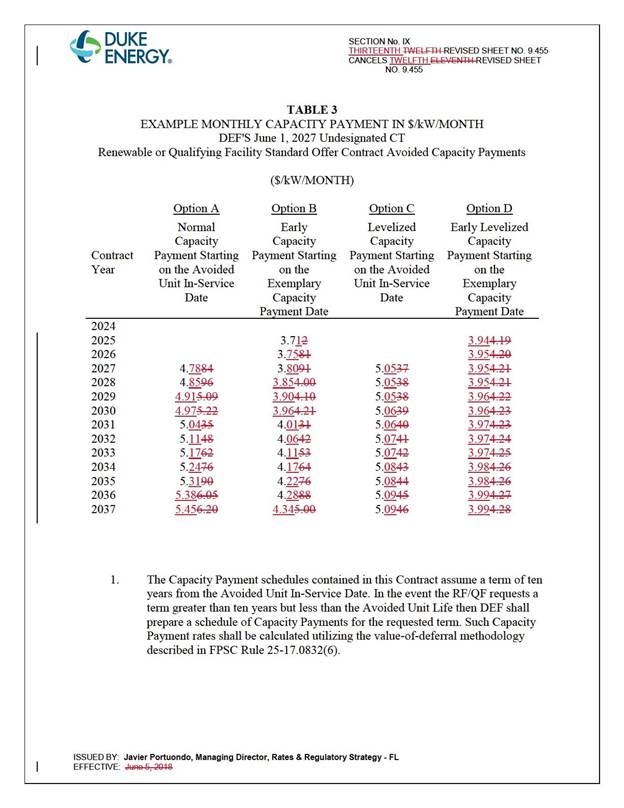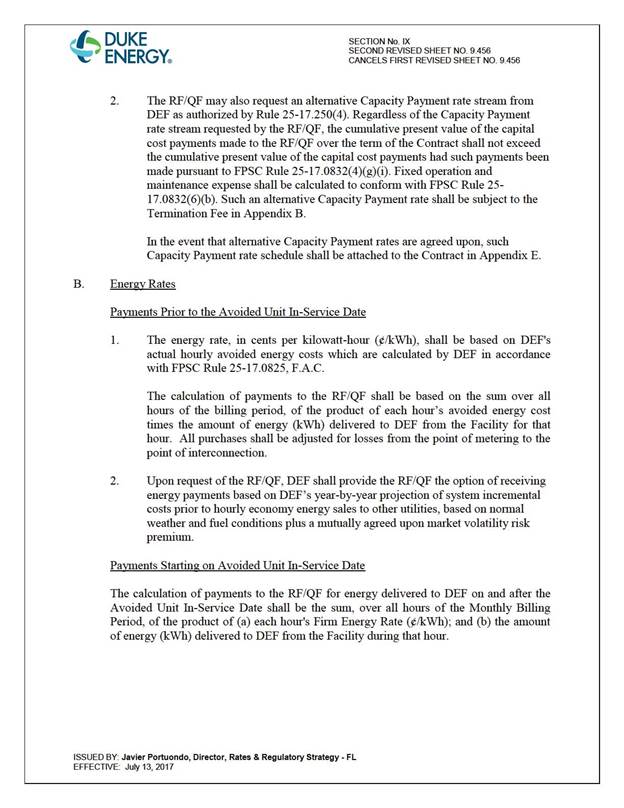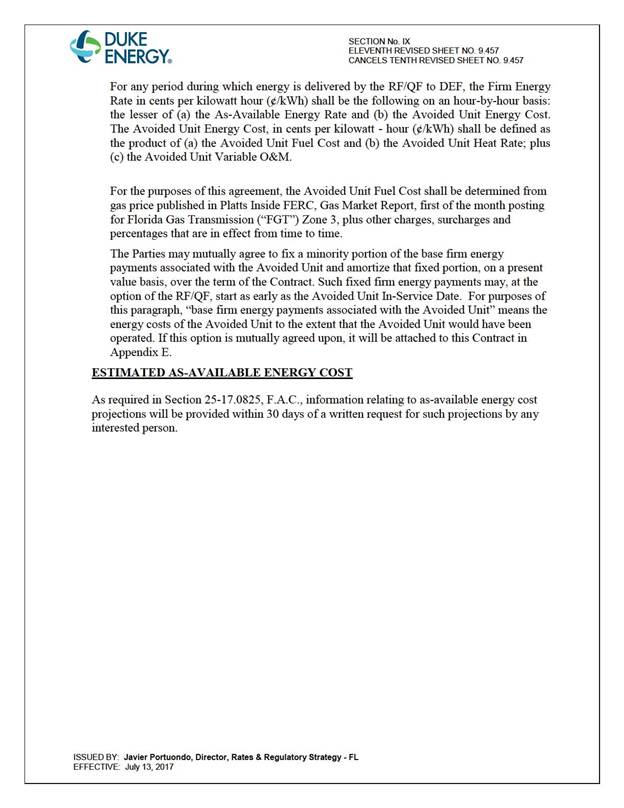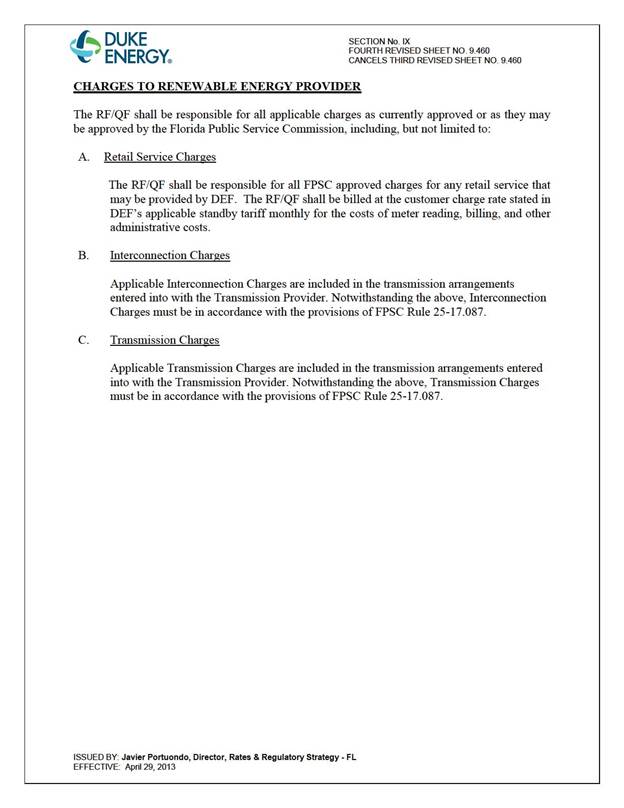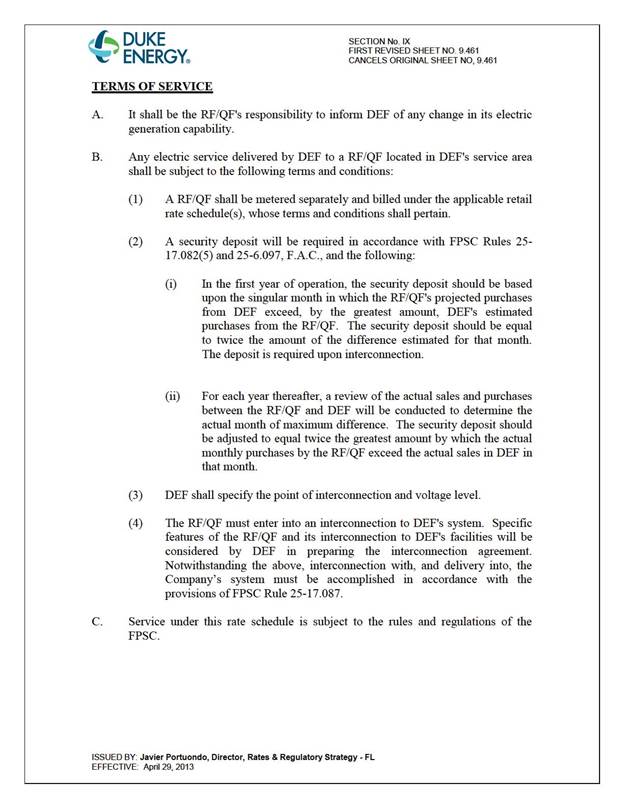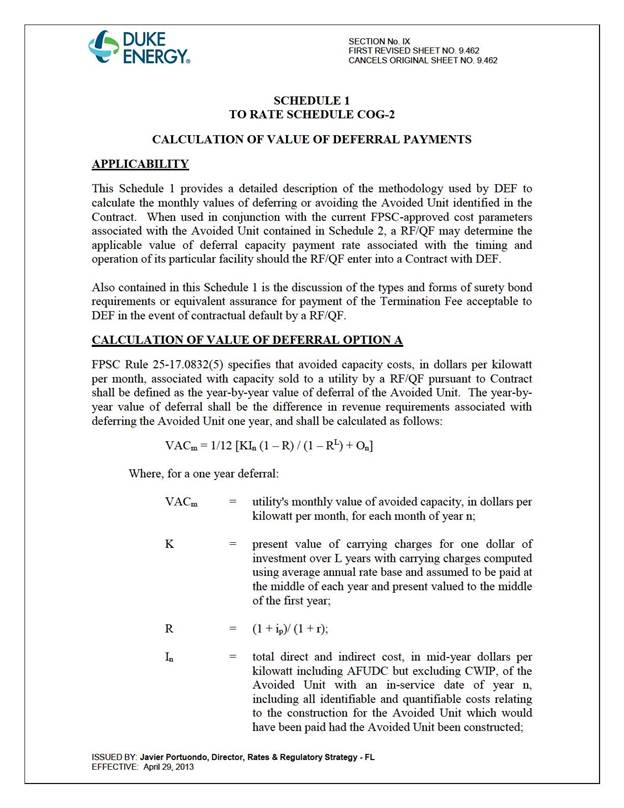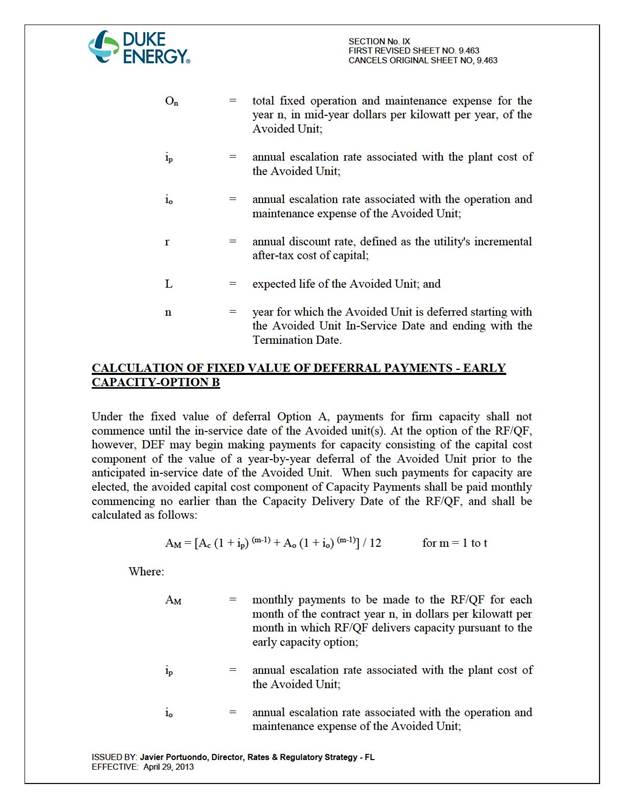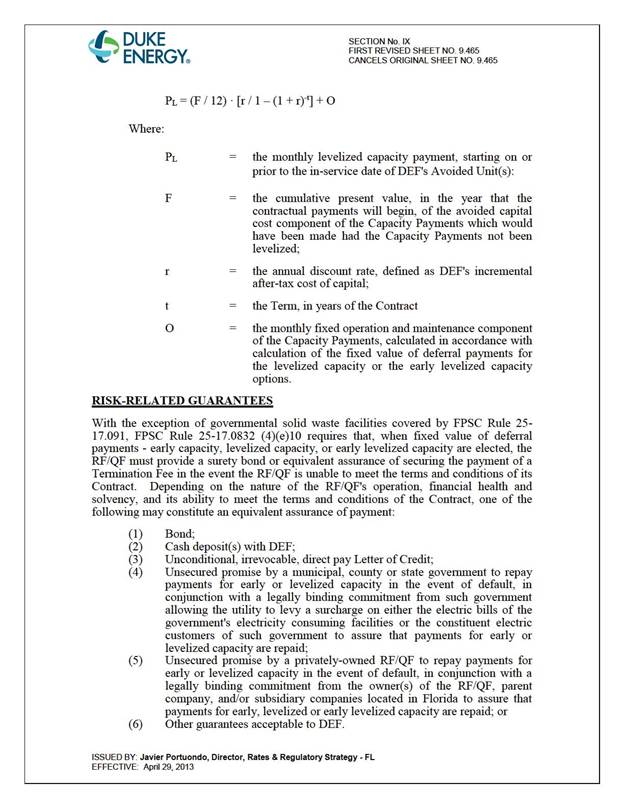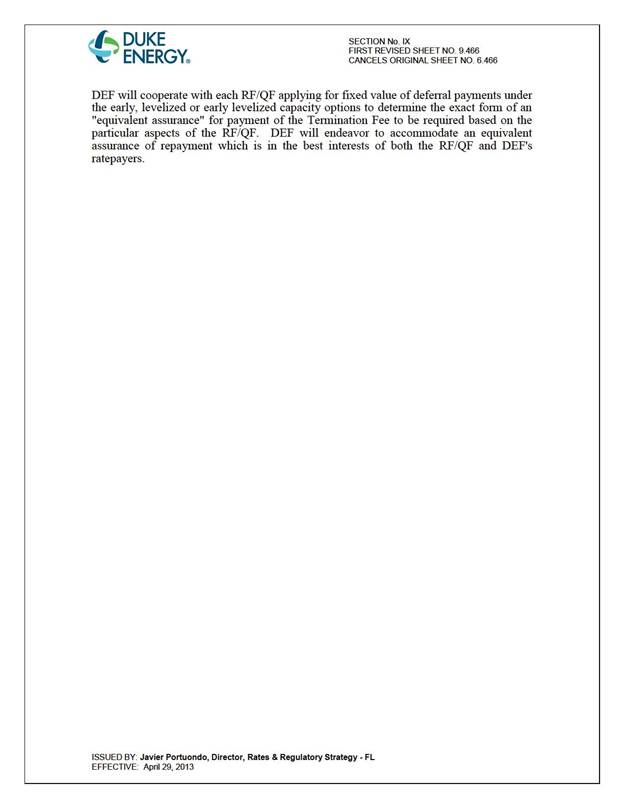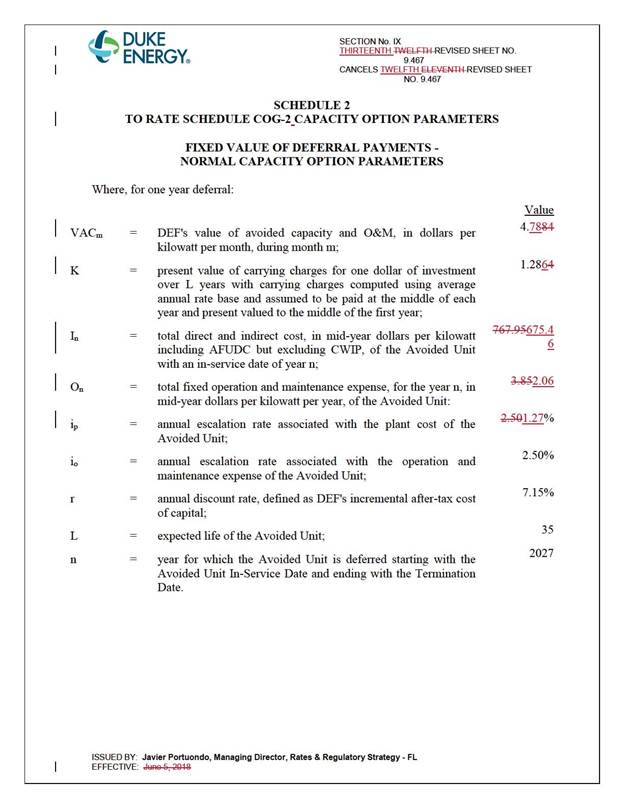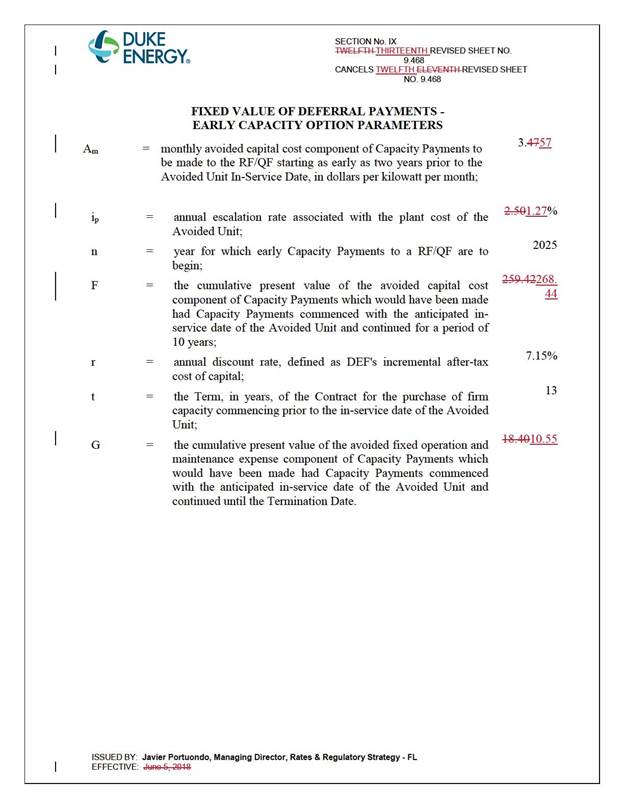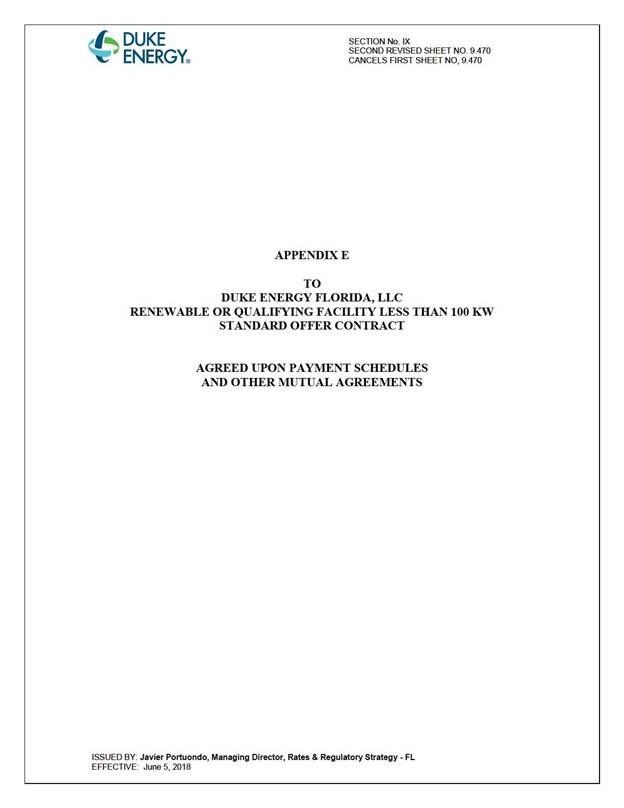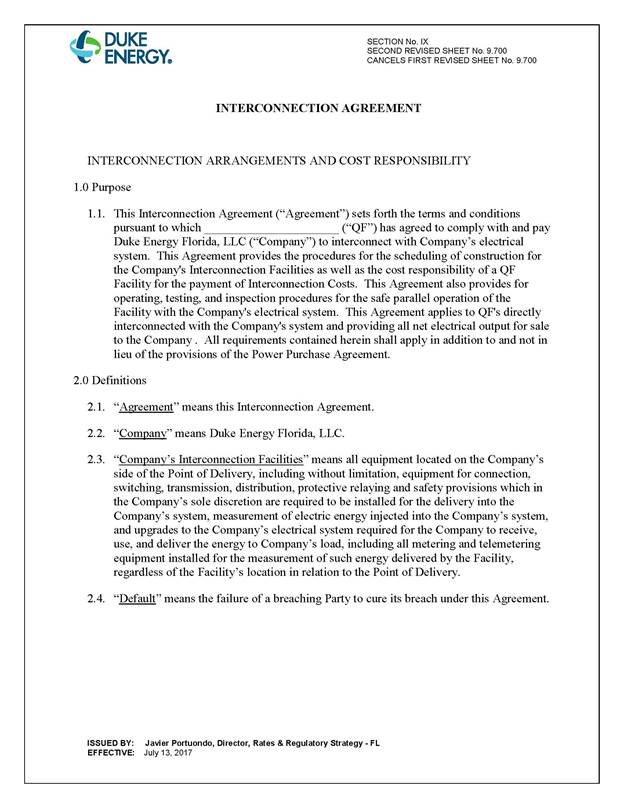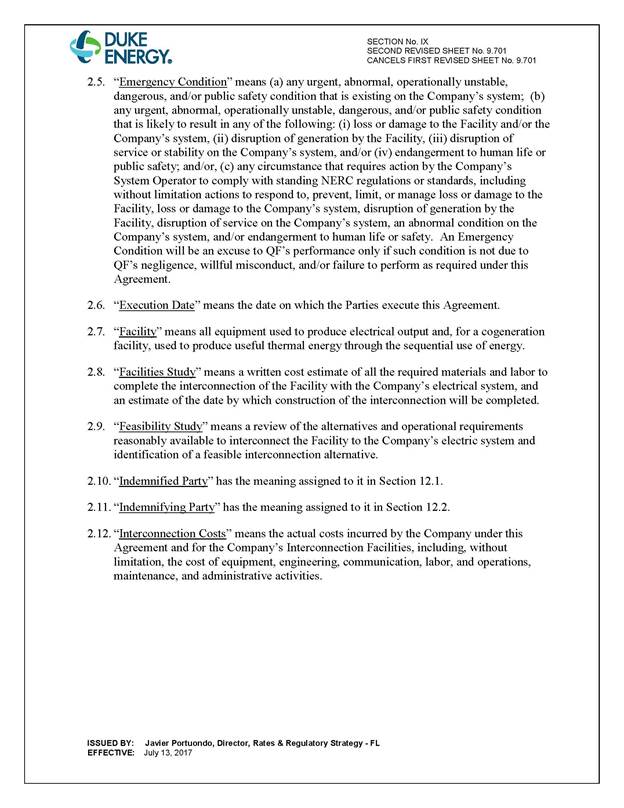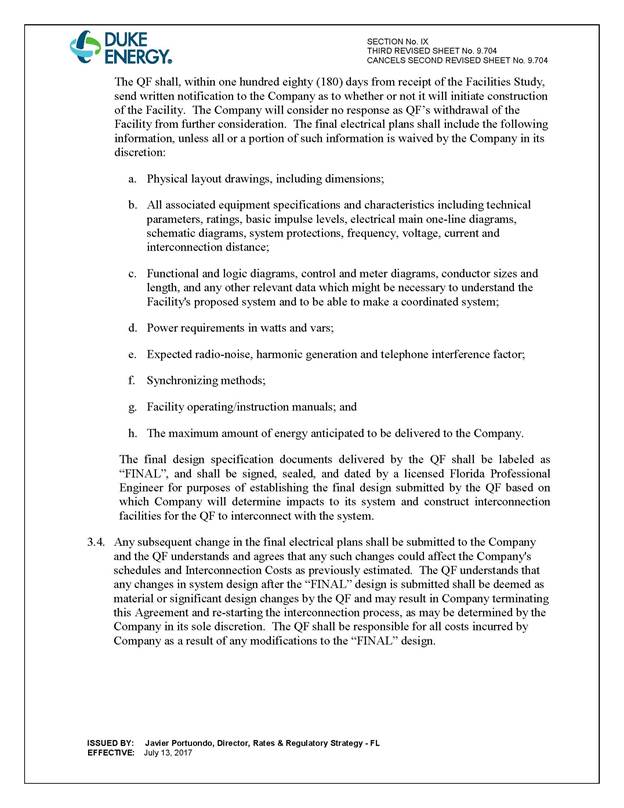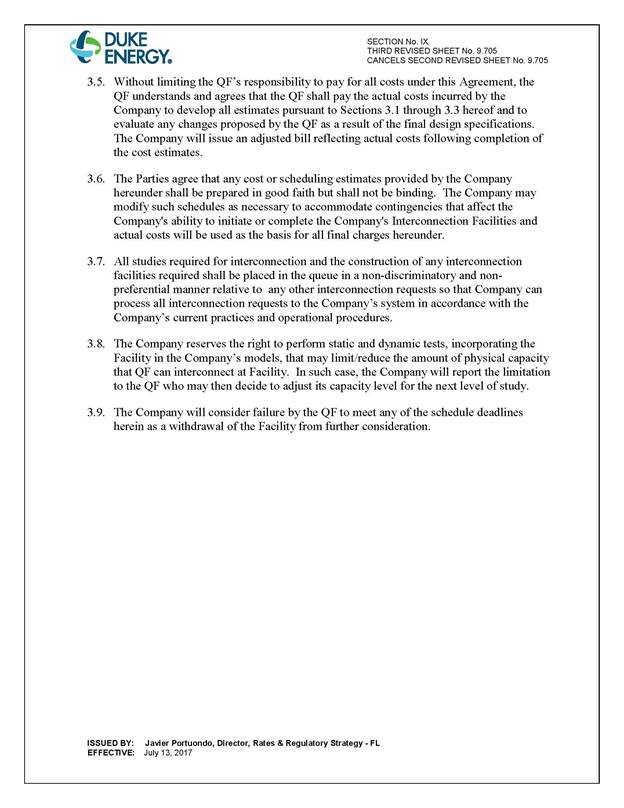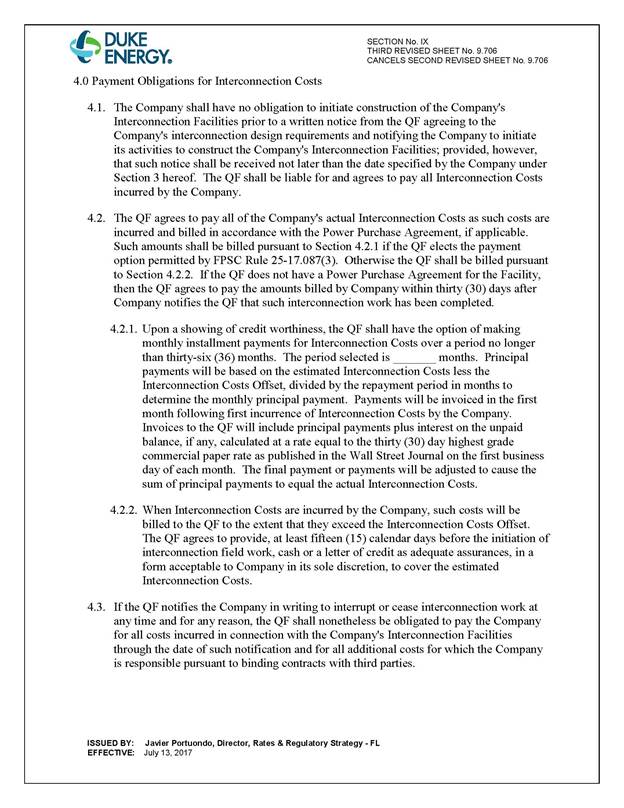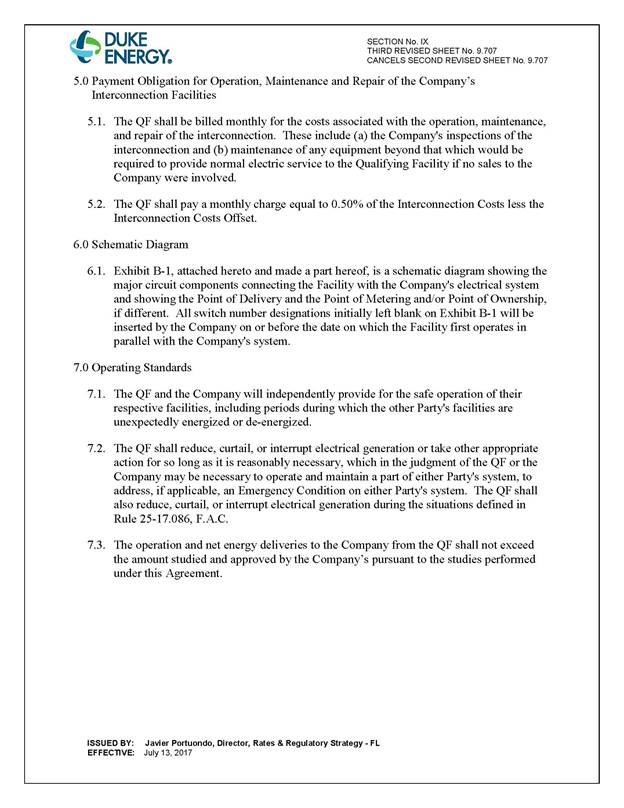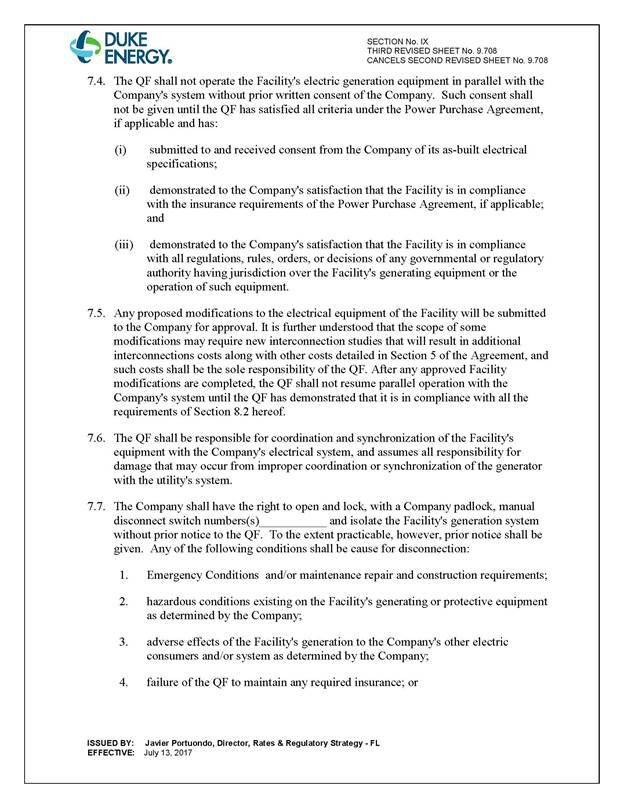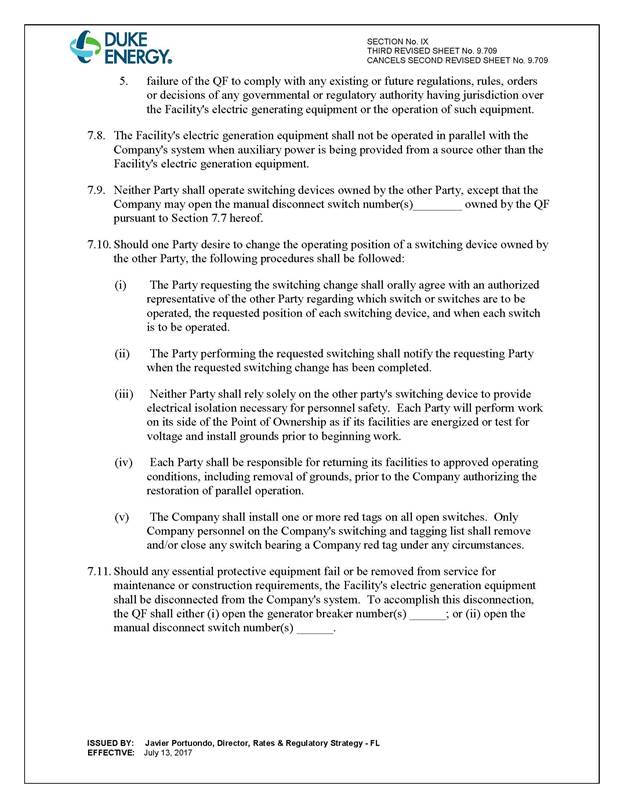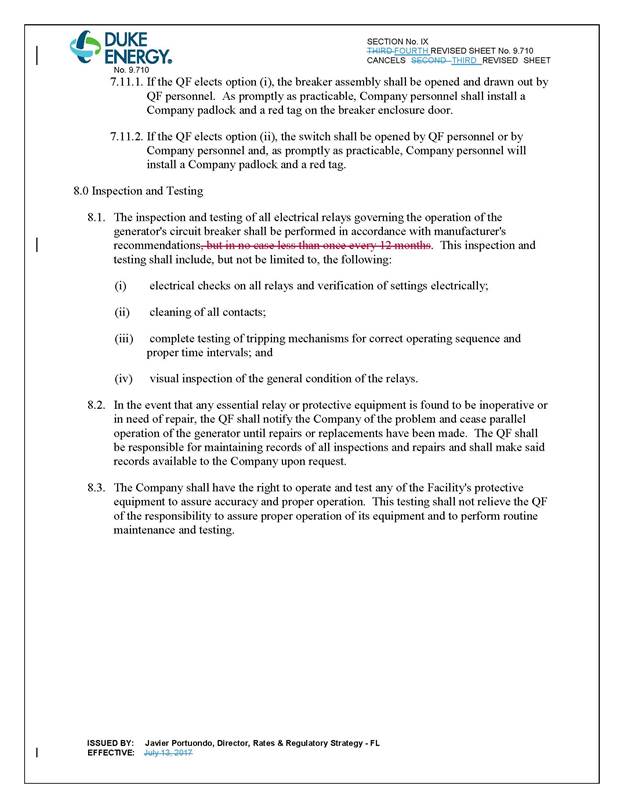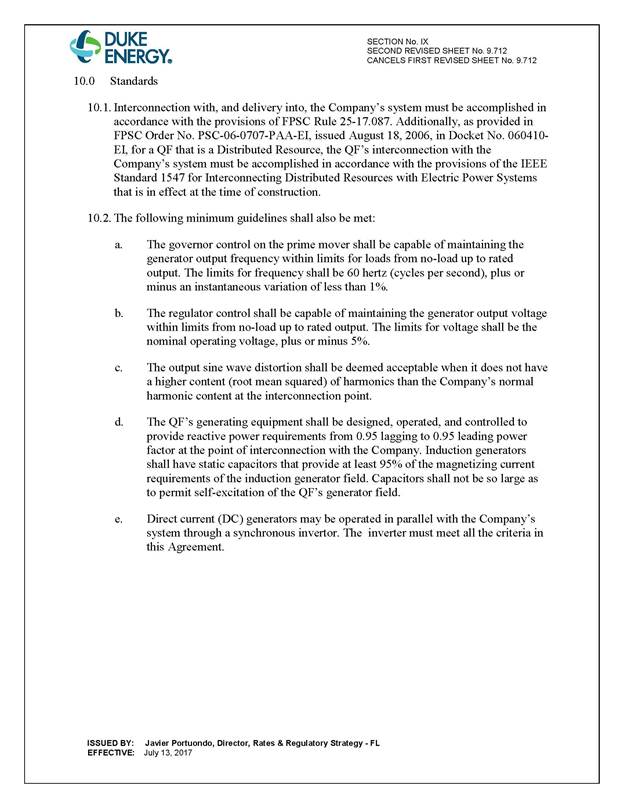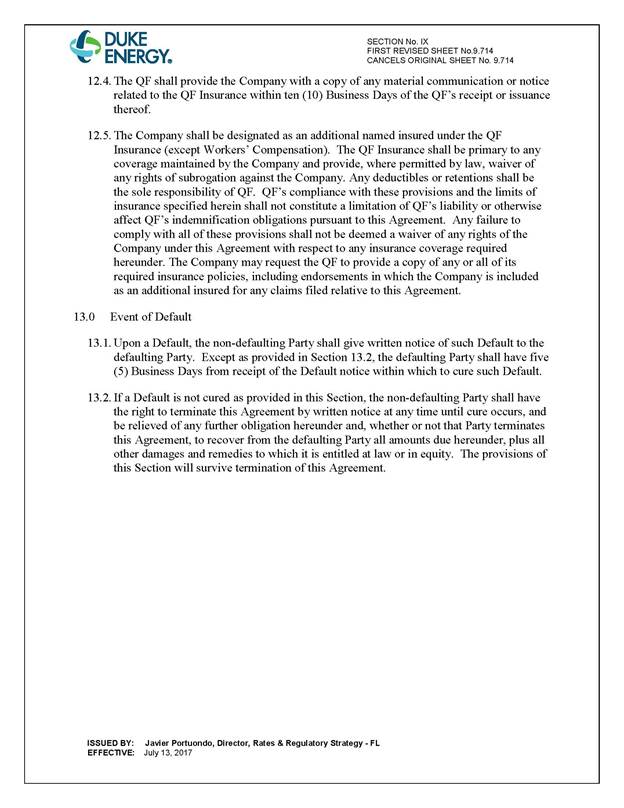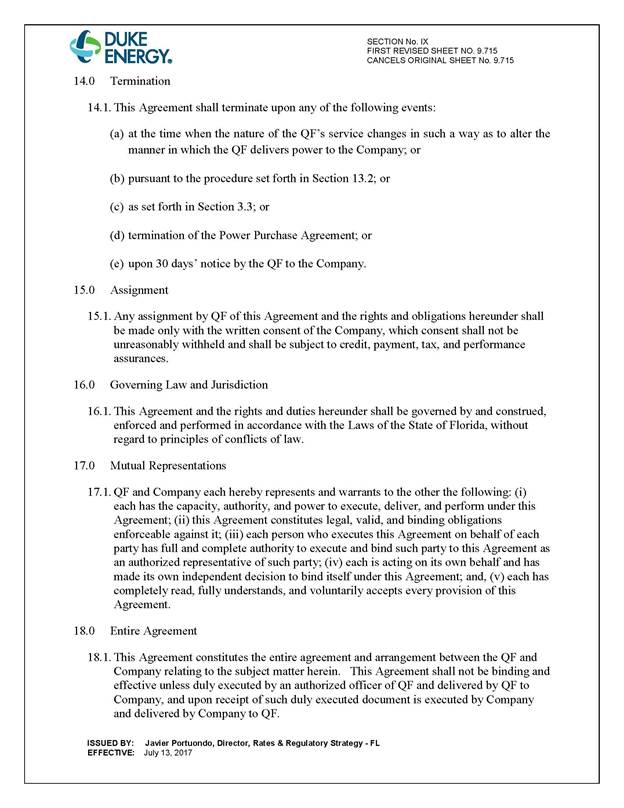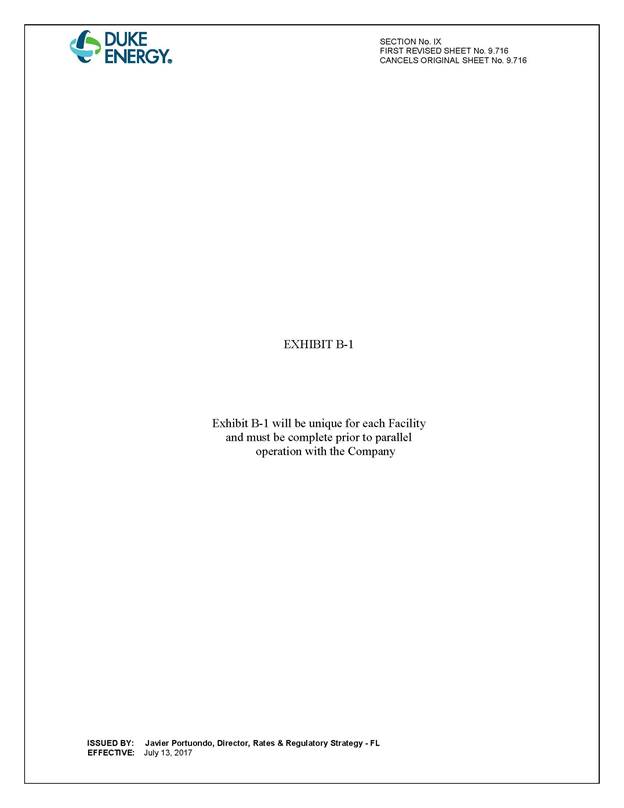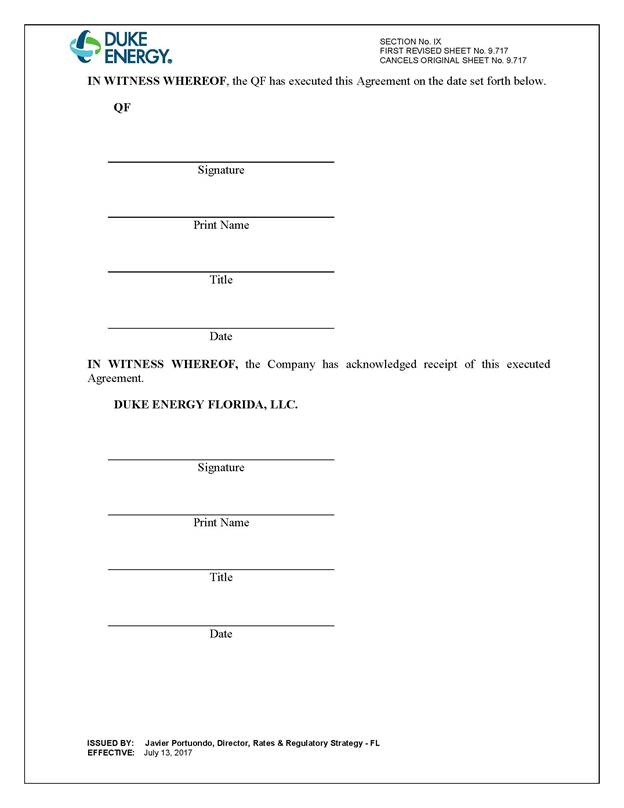Discussion
of Issues
Issue 1:
Should the Commission approve the amended standard offer
contract (Schedule COG-2) and amended interconnection agreement filed by Duke
Energy Florida, LLC?
Recommendation:
Yes. The provisions of DEF’s amended standard offer
contract and associated rate schedule COG-2, as revised on June 7, 2019, and
amended interconnection agreement, as filed on April 1, 2019, conform to all
requirements of Rules 25-17.200 through 25-17.310, F.A.C. The amended standard
offer contract provides flexibility in the arrangements for payments so that a
developer of renewable generation may select the payment stream best suited to
its financial needs. (Doehling, Thompson)
Staff Analysis:
Rule 25-17.250, F.A.C., requires that DEF, an IOU,
continuously make available a standard offer contract for the purchase of firm
capacity and energy from renewable RF/QFs with design capacities of 100
kilowatts (kW) or less. Pursuant to Rule 25-17.250(1) and (3), F.A.C., the
standard offer contract must provide a term of at least 10 years, and the
payment terms must be based on the Utility’s next avoidable fossil-fueled
generating unit identified in its most recent Ten-Year Site Plan or, if no
avoided unit is identified, its next avoidable planned purchase. DEF has
identified a 218 megawatt (MW) natural gas-fueled combustion turbine (CT) as the
next planned generating unit in its 2019 Ten-Year Site Plan. The projected
in-service date of the unit is June 1, 2027.
Under DEF’s standard offer contract, the RF/QF operator
commits to certain minimum performance requirements based on the identified
avoided unit, such as being operational and delivering an agreed upon amount of
capacity by the in-service date of the avoided unit, and thereby becomes
eligible for capacity payments in addition to payments received for energy. The
standard offer contract may also serve as a starting point for negotiation of
contract terms by providing payment information to an RF/QF operator, in a
situation where one or both parties desire particular contract terms other than
those established in the standard offer.
In order to promote renewable generation, the Commission
requires each IOU to offer multiple options for capacity payments, including
the options to receive early or levelized payments. If the RF/QF operator
elects to receive capacity payments under the normal or levelized contract
options, it will receive as-available energy payments only until the in-service
date of the avoided unit (in this case June 1, 2027), and thereafter begin
receiving capacity payments in addition to the energy payments. If either the
early or early levelized option is selected, then the operator will begin receiving
capacity payments earlier than the in-service date of the avoided unit.
However, payments made under the early capacity payments options tend to be
lower in the later years of the contract term because the net present value
(NPV) of the total payments must remain equal for all contract payment options.
Table 1 contains
estimates of the annual payments for each payment option available under the
amended standard offer contract to an operator with a 50 MW renewable facility
operating at a capacity factor of 95 percent, which is the minimum capacity
factor required under the contract to qualify for full capacity payments.
Normal and levelized capacity payments begin in 2027, reflecting the projected
in-service date of the avoided unit (June 1, 2027).
Table 1 – Estimated Annual Payments to
a 50 MW Renewable Facility
(95% Capacity Factor)
|
Year
|
Energy Payment
|
Capacity Payment (By Type)
|
|
Normal
|
Levelized
|
Early
|
Early Levelized
|
|
$(000)
|
$(000)
|
$(000)
|
$(000)
|
$(000)
|
|
2020
|
9,469
|
-
|
-
|
-
|
-
|
|
2021
|
8,638
|
-
|
-
|
-
|
-
|
|
2022
|
7,796
|
-
|
-
|
-
|
-
|
|
2023
|
7,172
|
-
|
-
|
-
|
-
|
|
2024
|
8,266
|
-
|
-
|
-
|
-
|
|
2025
|
9,878
|
-
|
-
|
2,173
|
2,333
|
|
2026
|
10,850
|
-
|
-
|
2,201
|
2,335
|
|
2027
|
12,413
|
1,674
|
1,788
|
2,230
|
2,337
|
|
2028
|
13,409
|
2,908
|
3,067
|
2,260
|
2,339
|
|
2029
|
13,833
|
2,946
|
3,070
|
2,289
|
2,341
|
|
2030
|
15,079
|
2,985
|
3,072
|
2,319
|
2,343
|
|
2031
|
15,656
|
3,024
|
3,075
|
2,350
|
2,346
|
|
2032
|
16,942
|
3,064
|
3,078
|
2,381
|
2,348
|
|
2033
|
17,411
|
3,104
|
3,081
|
2,412
|
2,350
|
|
2034
|
17,725
|
3,145
|
3,084
|
2,444
|
2,352
|
|
2035
|
16,807
|
3,187
|
3,087
|
2,476
|
2,355
|
|
2036
|
17,429
|
3,229
|
3,090
|
2,509
|
2,357
|
|
2037
|
18,218
|
3,271
|
3,093
|
2,542
|
2,360
|
|
2038
|
19,774
|
3,314
|
3,097
|
2,576
|
2,362
|
|
2039
|
20,956
|
3,358
|
3,100
|
2,610
|
2,365
|
|
Total
|
277,721
|
39,208
|
38,782
|
35,772
|
35,224
|
|
NPV (2019$)
|
133,766
|
15,549
|
15,549
|
15,549
|
15,549
|
Source:
DEF’s response to staff’s first data request.
The changes
made to DEF’s tariff sheets are consistent with the updated avoided unit. Other
revisions DEF made to its tariff sheets include: (1) financial and technical viability
conditions; (2) completion/performance security requirements; (3) delivery
voltage calculation methods; and (4) testing requirements.
The additional conditions to verify the RF/QF is both financially
and technically viable, found on Sheet Nos. 9.416, 9.419, and 9.420, and the
completion/performance security requirements, found on Sheet No. 9.425, were
added to provide additional protection to both DEF and its customers. The
technical viability and security requirements are consistent with conditions
approved in FPL’s standard offer contract. The
financial viability requirements on Sheet No. 9.416 were modified on June 7,
2019, to provide limited exemptions from these conditions. Staff believes the
revised financial requirements are adequate to safeguard ratepayers and should not
be overly burdensome to the RF/QF.
The revisions in the Delivery Voltage section, found on
Sheet No. 9.458, were made so that the delivery voltage adjustment factor will
be calculated based on the current delivery efficiencies in DEF’s tariff as
approved by FERC. This will allow for the delivery voltage adjustment factors
to stay up to date should there be any changes in DEF’s Open Access Tariff
subsequent to the standard offer contract filing, and will be provided within
30 days of a written request by any interested person. Changes in testing
requirements, found on Sheet No. 9.710, were made to reflect the current
testing requirements of modern electrical relays. This is consistent with the
manufacturer’s current recommendations.
In addition to the above revisions, there are a number of
unsubstantial changes including updates to calendar dates, position titles, and
typographical corrections. The type-and-strike format versions of the amended
standard offer contract and associated rate schedule COG-2, as revised on June
7, 2019, are included as Attachment A to this recommendation. The amended
interconnection agreement, as filed on April 1, 2019, is included as Attachment
B to this recommendation.
Conclusion
The provisions of DEF’s amended standard offer contract
and associated rate schedule COG-2, as revised on June 7, 2019, and amended
interconnection agreement, as filed on April 1, 2019, conform to all
requirements of Rules 25-17.200 through 25-17.310, F.A.C. The amended standard
offer contract provides flexibility in the arrangements for payments so that a
developer of renewable generation may select the payment stream best suited to
its financial needs.
Issue 2:
Should this docket be closed?
Recommendation:
Yes. This docket should be closed upon issuance of a
consummating order, unless a person whose substantial interests are affected by
the Commission’s decision files a protest within 21 days of the issuance of the
Commission’s Proposed Agency Action Order. Potential signatories should be
aware that, if a timely protest is filed, DEF’s standard offer contract may
subsequently be revised. (Murphy)
Staff Analysis:
This docket should be closed upon the issuance of a
consummating order, unless a person whose substantial interests are affected by
the Commission’s decision files a protest within 21 days of the issuance of the
Commission’s Proposed Agency Action Order. Potential signatories should be
aware that, if a timely protest is filed, DEF’s standard offer contract may
subsequently be revised.























